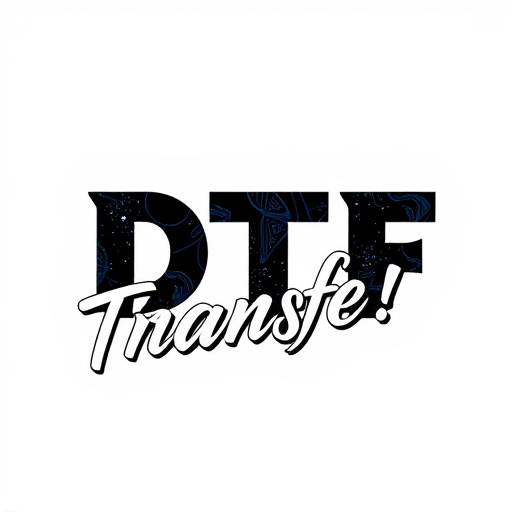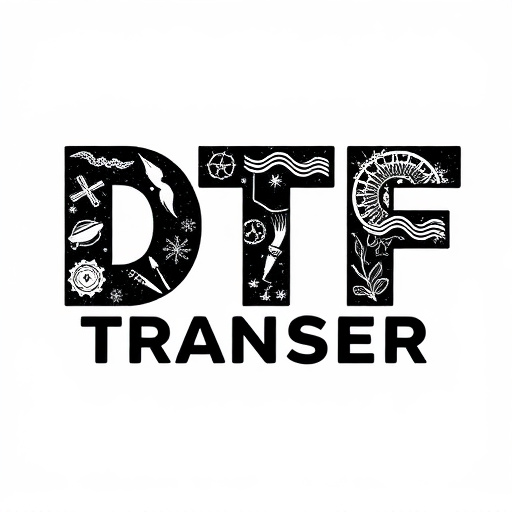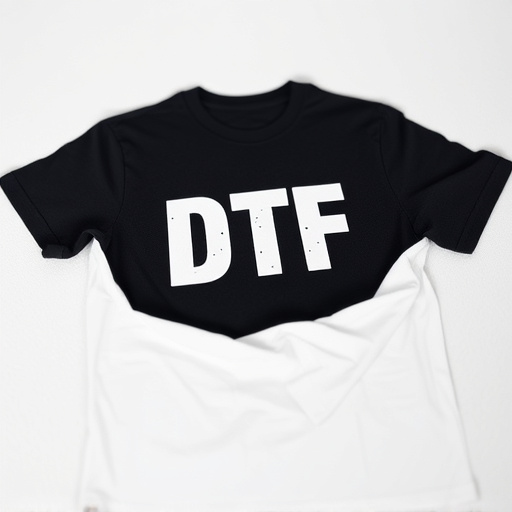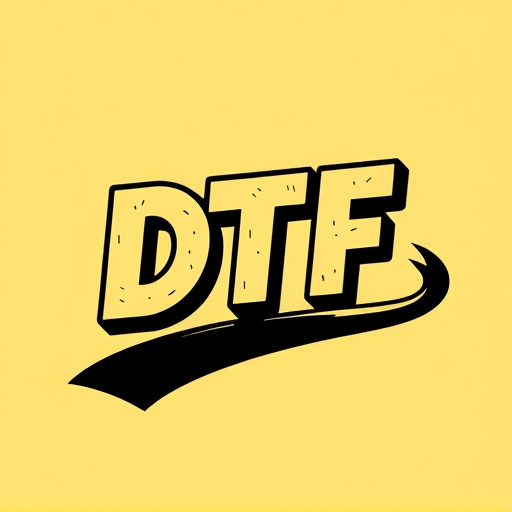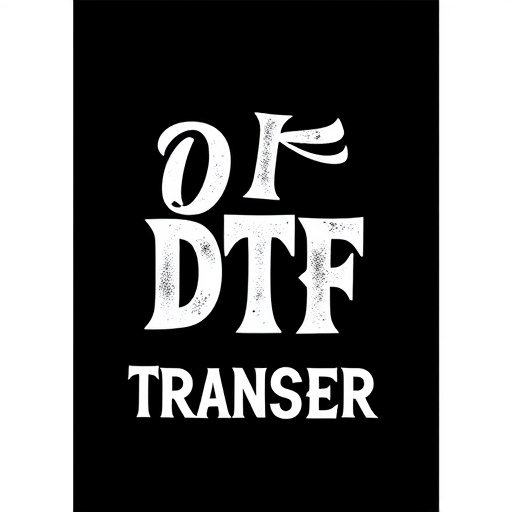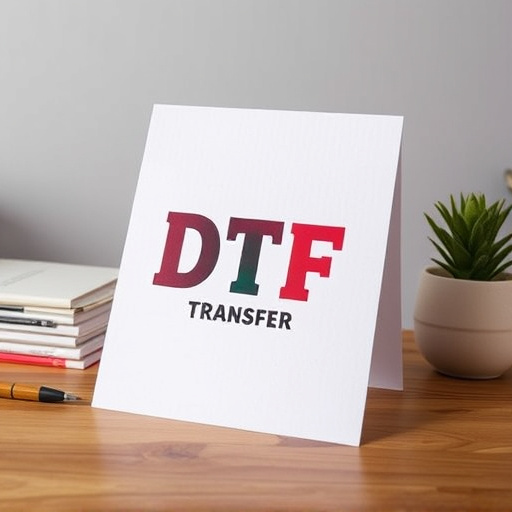Direct-to-film (DTF) technologies empower hobbyists and artisans to create intricate designs on various materials with ease. The process involves preparing a digital design, printing it onto DTF transfer film using an inkjet printer, then applying heat to fuse the design onto the substrate. Suitable DTF transfer films, high-resolution printers, and careful handling ensure vibrant, long-lasting prints for DIY projects and artisanal creations. DTF offers endless creative possibilities, from fabric patterns to personalized wooden signs, revolutionizing how hobbyists and professionals craft unique items.
Direct-to-film (DTF) transfers offer a captivating solution for hobbyists and artisans seeking unique creative outlets. This article explores the world of DTF printing, providing a comprehensive guide to unlock its potential. From understanding the basics of DTF transfers to mastering the step-by-step process, you’ll discover how this technique can enhance your craft projects. We’ll delve into the benefits, essential materials, and top tips for achieving high-quality DTF prints, empowering you to explore new artistic horizons.
- Understanding Direct-to-Film (DTF) Transfers: A Beginner's Guide
- Benefits of DTF for Hobbyists and Artisans: Unlocking Creative Possibilities
- Choosing the Right Materials: Essential Components for High-Quality DTF Prints
- Step-by-Step Process: From Design to Final DTF Transfer
- Applications and Ideas: How DTF Can Elevate Your Craft Projects
- Top Tips and Best Practices for Mastering DTF Printing Techniques
Understanding Direct-to-Film (DTF) Transfers: A Beginner's Guide
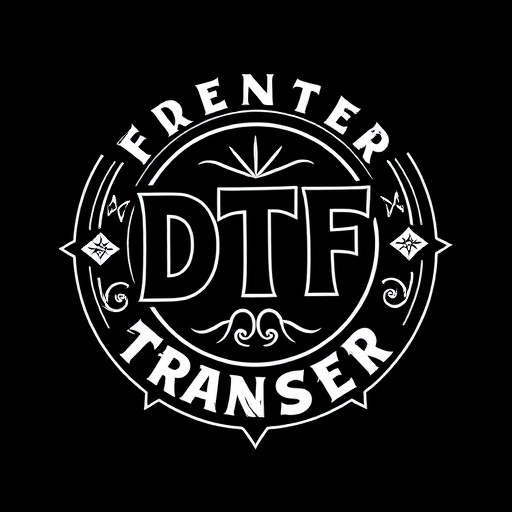
Direct-to-film (DTF) transfers are a game-changer for hobbyists and artisans looking to bring their creative visions to life. This innovative printing method allows you to apply intricate designs directly onto various materials, such as fabric, wood, metal, or ceramics, without the need for complex setup or expensive equipment. DTF involves using specialized inkjet printers and transfer films that enable precise, high-resolution printing directly onto the desired surface.
As a beginner, understanding the DTF process is key to achieving stunning results. The first step is to prepare your design digitally, ensuring it’s optimized for the medium you intend to print on. Then, select the appropriate DTF transfer film based on the material and desired finish. Next, print your design onto the film using an inkjet printer, making sure to follow manufacturer guidelines for ink and paper choices. Once printed, carefully apply heat (as per the film’s instructions) to fuse the design onto your substrate, creating long-lasting, vibrant DTF prints that can enhance any DIY project or artisanal creation.
Benefits of DTF for Hobbyists and Artisans: Unlocking Creative Possibilities
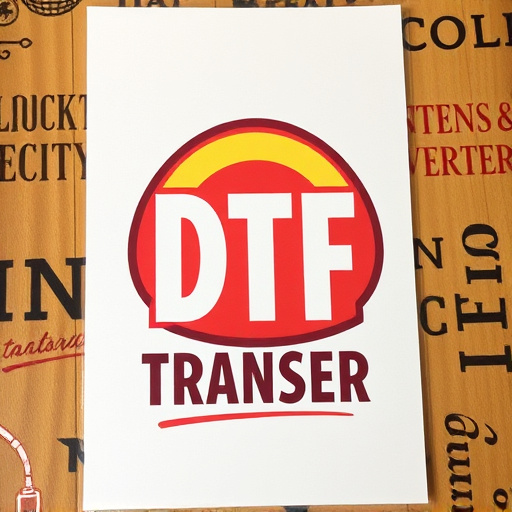
Direct-to-film (DTF) technologies offer a plethora of benefits for hobbyists and artisans, unlocking a world of creative possibilities. One of the key advantages is its accessibility; DTF Transfer methods allow individuals to print designs directly onto various materials like fabric, wood, or metal without the need for complex setup or specialized equipment. This democratizes creativity, enabling crafters and hobbyists to bring their unique visions to life with ease.
Moreover, DTF Printing provides an efficient way to create personalized items at scale. Artisans can quickly produce multiple prints of intricate designs, whether it’s a custom pattern for fabric, a decorative piece for woodworking, or a unique metal plaque. This not only saves time but also opens doors to new business opportunities, allowing artisans to cater to diverse customer preferences and demands. With DTF, the creative process becomes more adaptable, versatile, and thrilling for hobbyists and professional artisans alike.
Choosing the Right Materials: Essential Components for High-Quality DTF Prints
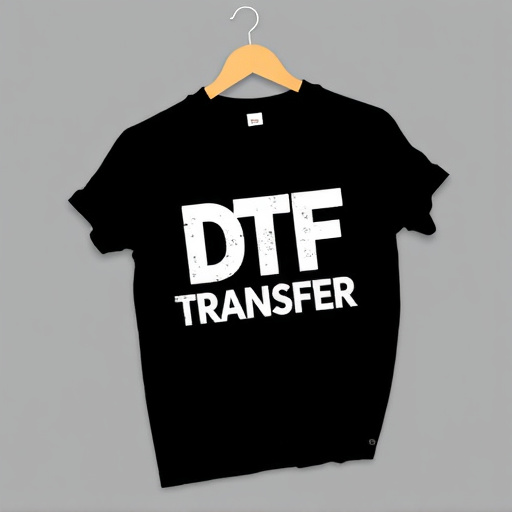
Choosing the right materials is paramount for achieving high-quality DTF (Direct-to-Film) prints. The first step involves selecting a suitable DTF Transfer film that aligns with your project’s needs. Look for films designed specifically for DTF Printing, as they offer optimal adhesion and durability, ensuring your designs transfer accurately and last longer.
Additionally, investing in a high-resolution printer is crucial. A top-quality printing device with precise control over ink deposition will yield finer details and more vibrant colors in your DTF Prints. Consider the medium you plan to print on, be it wood, fabric, or plastic, as different surfaces require specific types of film and printing settings for best results.
Step-by-Step Process: From Design to Final DTF Transfer
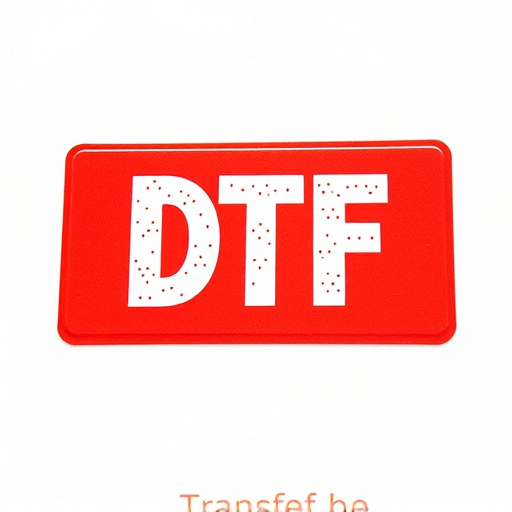
The journey from design to a final DTF (Direct-to-Film) transfer involves a series of meticulous steps that hobbyists and artisans can master with practice. It begins with creating or acquiring a digital design, which is then prepared for printing. This preparation includes resizing, cropping, and ensuring the design is suitable for the medium—a crucial aspect when considering DTF Printing.
Once the design is ready, it’s time to select the right DTF film, compatible with your printer. The film is then fed into the printer, and the magic happens. The printer applies the design to the film, layer by layer, creating a precise and vibrant DTF print. After printing, the film is carefully removed, leaving a high-quality, ready-to-apply transfer that can be affixed to various surfaces, from textiles to wood, offering endless creative possibilities for hobbyists and artisans.
Applications and Ideas: How DTF Can Elevate Your Craft Projects

Direct-to-film (DTF) technology offers a plethora of creative opportunities for hobbyists and artisans looking to elevate their craft projects. By employing DTF transfers or printing, artists can seamlessly integrate intricate designs and personalized touches onto various surfaces, transforming ordinary creations into extraordinary pieces.
Imagine adorning wooden signs with elegant calligraphy, creating unique patterns on ceramics, or adding delicate embroidery-like details to fabric. DTF prints allow for high-quality, detailed outcomes, making it an ideal solution for those seeking to add a special, personalized twist to their handmade goods. This innovative method encourages experimentation and opens up a world of possibilities for crafting enthusiasts to showcase their skills and unique artistic visions.
Top Tips and Best Practices for Mastering DTF Printing Techniques
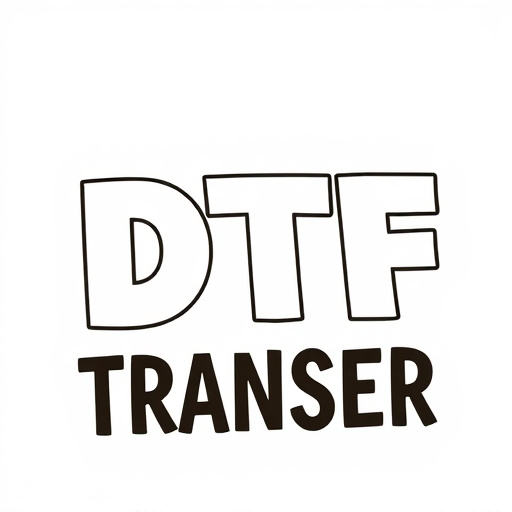
Mastering Direct-to-Film (DTF) printing techniques can unlock a world of possibilities for hobbyists and artisans looking to create unique, high-quality prints. Firstly, invest in top-quality DTF transfers designed specifically for your desired outcome. These transfers are crucial for achieving crisp, vibrant prints that truly bring your designs to life. Ensure the film is compatible with your printer and media type for optimal results.
Secondly, practice precision when preparing your design. Clean lines and precise cutouts are essential for successful DTF printing. Consider using vector graphics for clean edges and avoid complex, intricate details that may smudge or obscure during the transfer process. Test prints on scrap material to fine-tune your design and settings before applying it to your final project. Additionally, maintain a consistent print bed temperature and humidity level to prevent warping or blurring of your DTF prints.

